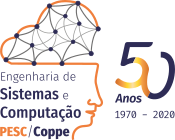STDCOL: Proposta de um Sistema Computacional de Modelagem Semiquantitativa para a Aprendizagem de Pensamento Sistêmico
Autores
|
1906 |
Gustavo Jacques Medina Hadju
|
814,25,4
|
|
1907 |
Lígia Alves Barros
(Orientador) |
814,25,4
|
|
1908 |
814,25,4
|
Informações:
Publicações do PESC
STDCOL: Proposta de um Sistema Computacional de Modelagem Semiquantitativa para a Aprendizagem de Pensamento Sistêmico
Gustavo Jacques Medina Hadju
Novembro/2000
| Orientador: | Lígia Alves Barros Lídia Maela Segre Segre | |
| ||
Este trabalho apresenta uma proposta de um sistema computacional de modelagem semiquantitativa para apoiar a aprendizagem do pensamento sistêmico. O processo de aprendizagem do pensamento sistêmico foi investigado e delineado através de análise da literatura. As ferramentas computacionais de modelagem dinâmica foram estudadas e classificadas em categorias. Foi apontada a categoria mais adequada e selecionada uma ferramenta desta categoria para servir de base para a proposta. A análise de um experimento realizado com esta ferramenta deu origem às melhorias propostas.
STDTOOL: Proposal of a Semiquantitative Modelling Computer System for Systems Thinking Learning
Gustavo Jacques Meduna Hajdu
November/2000
| Advisor: | Lígia Alves Barros | |
| Department: Systems Engineering and Computer Science | ||
This work presents a proposal of a semiquantitative modelling computer system for systems thinking leaming support. The process of leaming systems thinking was investigated and defined based on literature analysis. The dynamic modelling computer tools were studied and classified into categories. The most appropriate category was pointed out and one tool of this category was selected for our proposal foundation. The analysis of an use case with this tool originated the improvements proposed.This work presents a proposal of a semiquantitative modelling computer system for systems thinking leaming support. The process of leaming systems thinking was investigated and defined based on literature analysis. The dynamic modelling computer tools were studied and classified into categories. The most appropriate category was pointed out and one tool of this category was selected for our proposal foundation. The analysis of an use case with this tool originated the improvements proposed.




